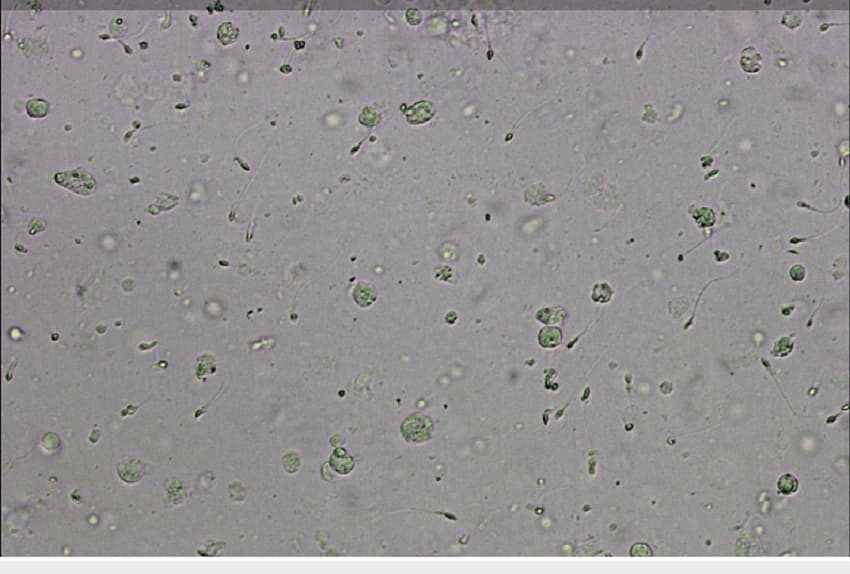This document discusses a rare occurrence of conjoined female twin pathology (Monocephalus Thoracopagus Tetrabrachius Tetrapus Dicaudatus) in a pluriparous Holstein Friesian crossbred cow. Such instances, while uncommon, present significant challenges in veterinary obstetrics, necessitating advanced diagnostic and surgical approaches.
Symptoms Leading to Discovery
The cow, in its third lactation cycle, exhibited signs of distress and prolonged labor, leading to veterinary intervention. The appearance of multiple limbs protruding anomalously prompted a thorough examination, revealing the complex conjoined twin condition.
Diagnostic Journey
Utilizing a combination of physical examinations, ultrasonography, and radiography, the condition was accurately diagnosed. These tools were instrumental in understanding the extent of conjoined and planning the surgical approach for the extraction of the deceased twin entity.
Surgical Resolution and Aftercare
A paramedian laparohysterotomy under local anesthesia facilitated the removal of the conjoined entity, followed by comprehensive post-operative care. This case underscores the necessity for meticulous surgical and aftercare protocols in managing rare obstetrical presentations in veterinary practice.
Anatomical and Radiographic Examination
Detailed anatomical dissection and radiographic imaging post-extraction provided insight into the twins’ shared and distinct anatomical features. The larger twin possessed a complete set of organs and limbs, while the smaller twin displayed partial development, sharing significant body structures with its counterpart.
Discussion on Embryonic Development Anomalies
Conjoined twinning in bovines, resulting from embryonic developmental disturbances, poses intriguing questions regarding genetic and environmental influences on such anomalies. This case contributes to the broader understanding of congenital malformations in livestock, highlighting the need for continued research and discussion in the field of veterinary science.
Key Factors in Managing Rare Bovine Obstetrical Cases
- Early Detection: Prompt recognition of abnormal labor signs to initiate immediate veterinary evaluation;
- Advanced Imaging: Utilization of ultrasound and radiography for accurate diagnosis of complex congenital conditions;
- Surgical Intervention: Preparedness for emergency surgical procedures, such as cesarean sections, to address obstructed labor;
- Postoperative Care: Comprehensive post-surgical management, including antibiotics and pain relief, to ensure recovery;
- Genetic Counseling: Consideration of genetic factors in breeding decisions to minimize recurrence of congenital anomalies.
Comparative Analysis of Conjoined Twin Cases in Bovine
| Feature | Current Case | Typical Cases of Conjoined Twins |
|---|---|---|
| Conjoinment Type | Monocephalus Thoracopagus Tetrabrachius Tetrapus Dicaudatus | Varies, often less complex than current case |
| Diagnostic Approach | Combination of ultrasound and radiography | Primarily ultrasound |
| Surgical Requirement | Paramedian laparohysterotomy under local anesthesia | Cesarean section, often without need for laparotomy |
| Postoperative Care | Antibiotics, NSAIDs, and supportive therapy for 7 days | Similar, may vary based on surgery complexity |
| Outcome | Successful extraction, cow recovered | Dependent on condition severity and intervention |
Enhancements in Veterinary Diagnostic Techniques
The evolution of veterinary diagnostic technologies has significantly improved the capacity to detect and evaluate congenital anomalies in livestock. Techniques such as Dual-energy Computed Tomography (DECT) and advanced ultrasonography have revolutionized the early detection and management of rare cases like conjoined twins.
These advancements not only aid in precise surgical planning but also minimize risks associated with invasive procedures. As diagnostic capabilities continue to evolve, veterinarians are better equipped to handle complex cases, leading to improved outcomes for both livestock and producers. The integration of these technologies into routine veterinary practice underscores a shift towards more proactive and preventative animal healthcare.
Future Directions in Veterinary Obstetrics
The field of veterinary obstetrics is at a crossroads, with emerging research and technologies paving the way for groundbreaking approaches to reproductive health and management. Innovations such as gene editing and embryo screening hold the promise of preventing congenital anomalies before they occur. Furthermore, the development of telemedicine and remote monitoring technologies offers the potential to enhance prenatal care, allowing for timely interventions in rural and underserved areas. As we look to the future, interdisciplinary collaboration between veterinary specialists, geneticists, and technologists will be crucial in advancing the field and ensuring the health and viability of livestock populations worldwide.
Ethical Considerations in Veterinary Genetics
The advent of genetic technologies in veterinary medicine brings forth complex ethical considerations, particularly in the treatment and prevention of congenital anomalies in livestock. The capability to identify genetic predispositions to conditions like conjoined twinning raises questions about the responsibility of breeders and veterinarians in making breeding decisions. Ethical frameworks are needed to guide these decisions, balancing animal welfare, genetic diversity, and the economic interests of livestock producers. Furthermore, the potential for genetic modification techniques to prevent congenital anomalies introduces debates regarding the natural integrity of animal genomes and the long-term implications for animal health and species diversity.
As we navigate these ethical waters, the veterinary community must engage with ethicists, animal welfare organizations, and the public to develop guidelines that prioritize the well-being of animals while respecting the goals of livestock production and genetic advancement.
Interdisciplinary Approaches to Congenital Anomalies in Livestock
Addressing the challenges posed by congenital anomalies in livestock requires an interdisciplinary approach that combines insights from veterinary medicine, genetics, and animal husbandry. Collaboration across these fields can lead to the development of comprehensive strategies for the prevention, diagnosis, and management of conditions like conjoined twinning. For instance, genetic research can identify markers associated with high risk of anomalies, informing selective breeding practices that reduce their incidence.
Veterinary innovations in prenatal diagnostics and surgical interventions can improve outcomes for affected animals, while advances in animal husbandry can optimize the health and environmental conditions that minimize the risk of congenital conditions. By fostering a collaborative environment, the agricultural and scientific communities can advance our understanding of these complex conditions and improve the quality of life for livestock. This interdisciplinary effort is crucial for the sustainable and ethical management of livestock populations, ensuring both animal welfare and the productivity of the agricultural industry.
Conclusion
The occurrence of conjoined twins in bovine species represents a rare and complex challenge in the field of veterinary medicine. This case study not only sheds light on the anatomical and surgical aspects involved in such rare instances but also emphasizes the importance of advanced diagnostic techniques in veterinary obstetrics. Through detailed examination and intervention, veterinary professionals can manage these extraordinary cases with precision, enhancing animal welfare and contributing to the scientific understanding of congenital anomalies in livestock.



